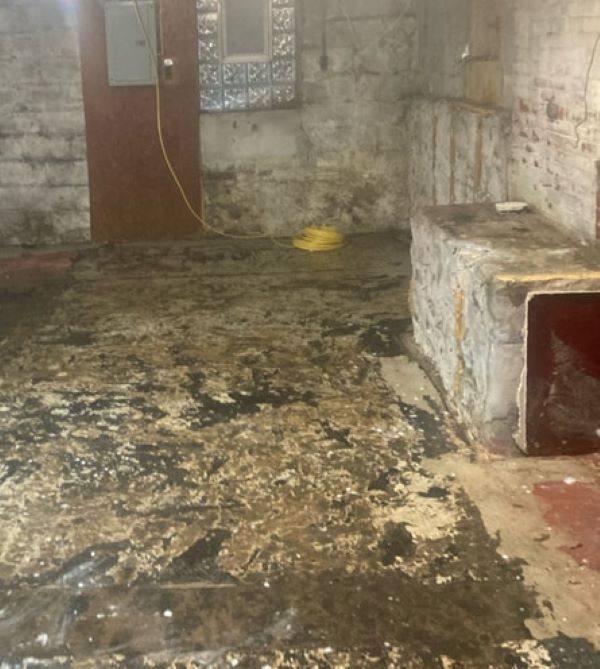How Fast Does Mold Grow After A Flash Flood?

In the wake of a flood, the looming concern for homeowners is the rapid onset of mold growth. At Aspen Environmental, LLC, we understand the urgency of addressing this issue promptly and comprehensively. In this detailed guide, we delve into the crucial topic of how long it takes for mold to grow in a flooded home, providing you with comprehensive insights and actionable steps to mitigate potential damage.
The Initial Stages: Post-Flood Scenario
When a home is flooded, the clock starts ticking on the potential growth of mold. Understanding the timeline is essential for effective mold prevention and remediation.
Factors Influencing Mold Growth
Mold can start growing within 24 to 48 hours after a flash flood, given the right conditions. The rate at which mold develops post-flood is influenced by several key factors, including:
1. Moisture Levels
Mold requires consistent moisture to thrive. Higher moisture levels accelerate mold growth. Factors such as standing water, humidity, and inadequate drying can contribute to elevated moisture levels.
2. Temperature
Mold thrives in a temperature range of 77 to 86 degrees Fahrenheit (25 to 30 degrees Celsius). Warmer conditions can significantly expedite mold colonization.
3. Surface Material
Different materials provide varying levels of nutrients for mold growth. Porous materials like drywall and wood are more susceptible to mold colonization than non-porous surfaces like metal or glass.
4. Ventilation
Proper ventilation is essential to reducing moisture levels and inhibiting mold growth. Areas with poor ventilation, such as basements or crawl spaces, are more prone to mold issues.
Mold Growth Timeline in Flooded Homes
Hours 1-24: Initial Absorption
In the first 24 hours after a flood, porous materials like drywall and wood begin absorbing moisture. This initial stage sets the conditions for mold spores to activate.
Days 1-5: Spore Activation
As moisture levels rise, dormant mold spores begin to activate. They germinate and extend hyphae, the thread-like structures that form the basis of mold growth.
Days 5-10: Visible Growth
Within the first week, you may start to notice visible mold growth. It often appears as discolored patches or fuzzy spots on affected surfaces.
Days 10-14: Colonization
Mold colonies continued to grow and expand during this period. The musty odor associated with mold becomes more pronounced.
Beyond Day 14: Advanced Growth
If left unchecked, mold can spread rapidly, causing extensive structural damage and health concerns.
Preventing and Addressing Mold Growth
To prevent mold growth in flooded homes, take these proactive measures:
Immediate Cleanup: Begin water extraction and drying processes as soon as possible to minimize moisture levels.
Professional Assistance: Consult mold remediation experts for thorough inspections and removal if mold is present.
Ventilation: Ensure proper airflow and ventilation in your home to reduce moisture buildup.
Dehumidification: Utilize dehumidifiers to uphold ideal moisture levels.
Is Professional Mold Remediation Necessary After a Flash Flood?
In many cases, professional mold remediation is advisable after a flash flood. While you can take initial steps to mitigate mold growth, experts have the knowledge and equipment to address it comprehensively. Here’s why professional help may be necessary:
Thorough Assessment: Professionals can identify hidden mold and assess the extent of damage.
Effective Remediation: They have access to specialized equipment and techniques for mold removal.
Preventing Recurrence: Experts can offer advice on preventing future mold issues.
Health Risks Associated with Mold Growth After a Flash Flood
Mold growth after a flash flood can pose health risks. The three most important health concerns associated with mold exposure are respiratory problems, allergies, and fungal infections.
Respiratory Problems: Mold produces airborne spores and mycotoxins that, when inhaled, can irritate the respiratory system. This can lead to coughing, and wheezing, and exacerbate pre-existing respiratory conditions such as asthma.
Allergies: Mold spores are potent allergens and can trigger allergic reactions in sensitive individuals. Sneezing, runny nose, itchy eyes, and skin rashes are some of the symptoms.
Fungal Infections: In some cases, exposure to mold can lead to fungal infections in the skin, eyes, or respiratory tract. These infections can be particularly problematic for individuals with weakened immune systems.
In conclusion, understanding the timelines of mold growth in flooded homes is crucial for effective prevention and remediation. By taking swift action and implementing preventive measures, you can protect your property and the health of your loved ones from the harmful effects of mold growth. For expert guidance and assistance, contact Aspen Environmental, LLC today.
Best Mold Remediation Provider in Boston, MA
Don’t let mold jeopardize your health and home any longer. Take action today by calling Aspen Environmental at (978) 681-5023. Our expert team is ready to provide top-notch mold remediation services to ensure a safe and healthy living environment for you and your loved ones. Don’t wait; contact us now to schedule your consultation and take the first step towards a mold-free future.
